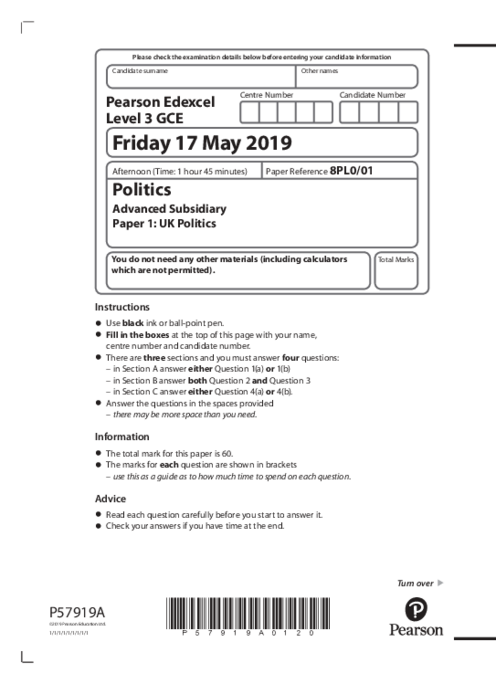Politics 8PL0/01 June 2019
omer uner
1. Expansion of voting rights in 20th-century UK: removal of property qualifications, Representation of the People Acts 1918, 1928 equalizing men and women voting age, universal adult suffrage, gradual inclusion of younger voters
2. Increasing use of referendums since late 20th century: examples include Scottish independence, Brexit, Devolution referendums, use for direct democracy and legitimacy enhancement, increasing public participation in major political decisions
3. Political party funding imbalance: Conservatives receiving higher donations than Labour, reliance on large donors and trade unions, transparency issues due to delayed disclosure, concerns over fairness and election influence
4. Electoral systems reform post-1997: Additional Member System (AMS) in Scotland and Wales, Supplementary Vote (SV) in London mayoral elections, Single Transferable Vote (STV) in Northern Ireland, arguments for greater representativeness and voter choice versus turnout challenges and party dominance
5. Role of human rights protection: pressure groups versus political parties, influence of groups like Liberty and Amnesty International, effectiveness in advocacy and lobbying compared to party politics and government action
6. Social class influence on voting behavior: analysis of elections including 1997, with debate on decline of class voting versus continuing socio-economic determinants, impact of media, identity politics, and changing party alignments
See More Paper 1 6 months ago
Politics (8PL0) Subject directory
All resources in one place
Related Past Papers
Related Tutorials
Crash report

